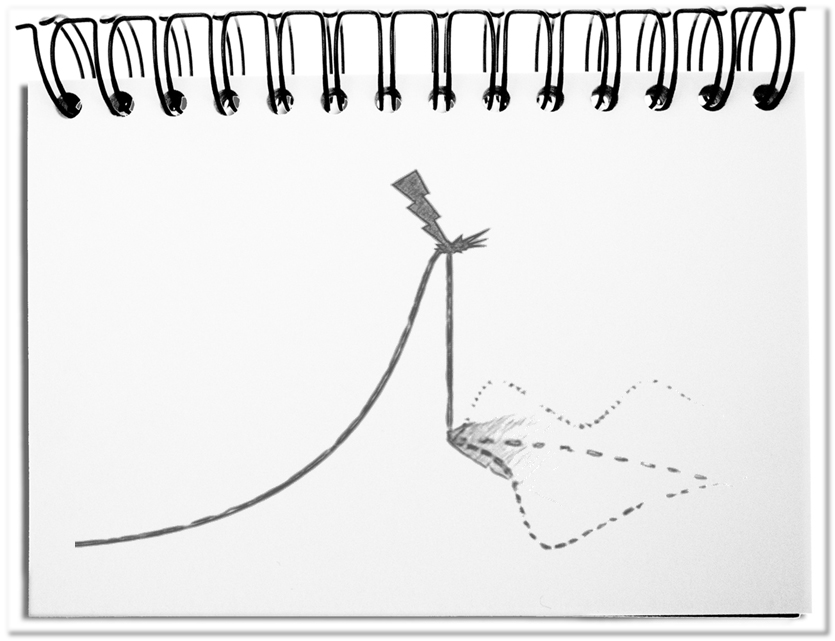As soon as the unimaginable happens, the boundaries shift. Who would have thought that the well-worn delivery routes would come to a standstill, millions of employees would be put on short-time, or average citizens would protest against the elected government in the streets. We live in the present, vaguely recognizing the past and looking to the future with confidence. In doing so, we overlook the fact that the future is not visible but consists of distorted presuppositions. We are facing a disruption (D-Day) at any moment – like the Chelyabinsk meteor on February 15, 2013, the COVID-19 pandemic since December 2019, or the Eyjafjallajökull eruption of March 20, 2010. We rarely deal with possible significant disruptions that have not happened for a long time or never happened. Yet, we had to learn that they can occur at any time. The consequences threaten people locally, regionally, or even globally.
In risk management (RM), emergency solutions are thought of in advance. A large-scale epidemic and its impact have had a low profile when considering the various measures and contagions. For this reason, we are looking at potential breaches that could slow down or halt our established processes.
- Pandemics
Although pandemics are estimated to occur every 30 years (Future Global Shocks, OECD), their unpredictability (Where? When? Propagation speed? Infection rate? Mortality?), as well as possible impacts on other areas (Society, Economy, Mobility, Logistics, etc.), mean that so far the RM has rated this risk relatively low. - Environmental disasters
The volcanic eruption in Iceland mentioned above resulted in 100,000 flights being canceled, ten million people affected, and 1.5 to 2.5 billion euros in losses in air traffic accumulated. There are nearby mega-cities latently threatened by dormant volcanoes, like Tokyo, Naples, Mexico City. How the many possible environmental catastrophes are assessed by those responsible, not only locally, is decisive for whether transitional solutions are prepared for the broader environment. - Infrastructure crash
The infrastructures of developed countries such as Norway, Australia, the USA, Germany, and Canada have proliferated over decades. Today they are showing signs of decay in communications, energy, and traffic. In addition, they are threatened by the consequences of accidents (for instance, through nuclear power, toxic raw materials, and chemicals) and environmental disasters (climate change, natural disasters, and geomagnetic storms). How do risk managers safeguard global supply chains? - Civilizational Collapse
Societal changes in Asia, the Arab world, and even the US threaten the world’s achieved prosperity. When the low-wage countries fail due to terror and power struggles or the disconnected US social classes storm the Capitol, these are signs that the established close-knit dependencies are disintegrating. Those in charge should prepare contingency plans for such events. - Resource crisis
There is still a lack of limited awareness regarding the natural resources of the earth. More than 4000 years ago, Mesopotamian city-states already fought for access to water. Today, Israel is digging up the waters of the Jordan River from neighboring countries. China dams the Mekong, causing Vietnam to run out of water. Tesla is tapping groundwater near Berlin, with unknown consequences for the region. Although resource availability is declining over time, it is unclear whether and how these risks must be assessed. - Economic crisis
These economic crises do not arise spontaneously. Through globalization, the world’s economic systems are closely interconnected – the flow of finance, the movement of goods, far-reaching cooperation, and unstoppable knowledge flow. As soon as sand gets into these gears, there are immediate consequences for all regions of the world. This goes so far that the parties involved wage economic wars to eliminate potential competitors. But what measures are envisaged as a precaution? - Wars
In the history of humankind, 14,400 wars are said to have taken place, in which an estimated 3.5 billion people died. The number of unreported cases is probably much higher. These warlike tensions affect all risk areas – wars create environmental disasters, destroy infrastructure, let societies collapse, deplete resources and shake economies. Material consequences are inevitable. How are wars built into risk plans?
Bottom line: All these risks create disruptions that culminate in a D-Day (Day of Disruption). These events cannot be prevented. We can only respond to them with measures already prepared in the drawer and should mitigate the effects. For example, if a logistics company operates its IT outside a vulnerable area – away from earthquakes and volcanoes and trouble spots. Having intelligent solutions available, the risk must be seen in advance to provide the necessary contingency plans. Even if you don’t know what the following effects are, be prepared for your D-Day!


